© Borgis - Postępy Nauk Medycznych 6/2012, s. 484-490
*Łukasz Stoliński1, 2, Tomasz Kotwicki1, 3, Dariusz Czaprowski1, 4
Aktywna korekcja postawy ciała dziecka oceniona za pomocą plurimetru Rippstein’a i udokumentowana za pomocą fotografii cyfrowej
Active self correction of child’s posture assessed with plurimeter and documented with digital photography
1Rehasport Clinic, Poznań
Head of the Clinic: Witold Dudziński, MD, PhD
2Sport Secondary School Complex of John Paul II, Skierniewice
Head of the Clinic: Stanisław Pietrzowski, MSc
3Spine Disorders Unit, Department of Pediatric Orthopedics and Traumatology, University of Medical Sciences, Poznań
Head of Department: Prof. Andrzej Szulc, MD, PhD
4Physiotheraphy Department, Józef Rusiecki University College, Olsztyn
Head of Department: Leonard Januszko MD, PhD
Streszczenie
Wstęp. Postawa ciała jest pozycją, w której dana osoba przebywa w wyprostowanej spontanicznej pozycji stojącej. Objawia się poprzez przestrzenne usytuowanie wzajemnych części ciała w jego budowie. Postawa ciała może być spontaniczna, tzw. swobodna lub czynnie skorygowana przez dziecko, o którym mowa w literaturze jako „aktywnie skorygowana”. Celem pracy była ocena sposobu wykonania ruchu czynnej korekcji postawy przez uczniów po komendzie „wyprostuj się”.
Materiał i metody. 126 uczniów szkół podstawowych, 60 dziewcząt i 66 chłopców w wieku od 7,0 do 13,0 lat (9,1 ± 1,6), badano w pozycji stojącej dwa razy: w postawie swobodnej i aktywnie skorygowanej (po komendzie „wyprostuj się”). Dzieci nie były instruowane, co oznacza prawidłowa postawa skorygowana. Kąty kliniczne w płaszczyźnie strzałkowej: C7-T12 (globalnej kifozy piersiowej, TTK), C7-T6 (górnej kifozy piersiowej, PTK), T6-T12 (dolnej kifozy piersiowej, DTK), T12-S1 (lordozy lędźwiowej, LL) i nachylenia kości krzyżowej (SI) zmierzono Plurimetrem Rippsteina. Badania składały się również z dokumentacji fotograficznej postawy ciała, aby w sposób wizualny pokazać wpływ ruchu na postawę. Zmienność statystyczną różnic sprawdzono za pomocą sparowanego testu t-Studenta.
Wyniki. Kąty TTK, PTK, DTK, LL i SI odpowiednio w postawie swobodnej w porównaniu z czynnie skorygowaną były następujące: 38,7° ± 9,0° w porównaniu do 27,6° ± 10,5° (różnica istotna), 32,4° ± 5,3° w porównaniu do 29,3° ± 6,8° (różnica istotna), 6,6° ± 7,8° w porównaniu do -2,3° ± 8,2° (różnica istotna), 34,8° ± 8,0° w porównaniu do 33,6° ± 8,3° (różnica nie istotna) i 23,5° ± 5,9° w porównaniu do 25,8° ± 5,5° (różnica istotna).
Wnioski. Pomiar plurimetrem i dokumentacja za pomocą fotografii cyfrowej pozwoliła na jakościową i ilościową ocenę postawy ciała i jej zmianę po bodźcu słownym. Dzieci zareagowały na komendę „wyprostuj się” poprzez zmianę ich postawy, wytwarzając patologiczną lordozę w dolnym odcinku kręgosłupa piersiowego. Polecenie „wyprostuj się” wydawane dzieciom w celu skorygowania ich postawy powinno być poprzedzone odpowiednim instruktarzem wykonania prawidłowej czynnej korekcji, aby uniknąć nieprawidłowych wzorców ruchowych.
Summary
Introduction. Body posture is the position in which a person holds the body upright in a spontaneous standing position. It is externally manifested by the mutual spatial alignment of body parts and by the person’s figure. The posture may be spontaneous, so-called habitual, or actively corrected by the child, referred to in the literature as “actively corrected”. The aim of the study was to evaluate the manner of posture correction by school children instructed with the “stand straight” command.
Material and methods. 126 primary school pupils, 60 girls and 66 boys, aged 7.0 to 13.0 years (9.1 ± 1.6), were examined in standing position twice: in a relaxed posture and in actively corrected posture (after the “straight the back” command). Children were not instructed what corrected posture means. Sagittal clinical angles: C7-T12 (total thoracic kyphosis, TTK), C7-T6 (proximal thoracic kyphosis, PTK), T6-T12 (distal thoracic kyphosis, DTK), T12-S1 (lumbar lordosis, LL) and sacral inclination (SI) were measured with Rippstein plurimeter. The study included also a photographic documentation of the body to show visual changes of the movement. Significance of difference of the means was checked with paired t-test.
Results. The TTK, PTK, DTK, LL and SI angles in relaxed versus corrected posture were as follows: 38.7° ± 9.0° versus 27.6° ± 10.5° (difference significant), 32.4° ± 5.3° versus 29.3° ± 6.8° (difference significant), 6.6° ± 7.8° versus -2.3° ± 8.2° (difference significant), 34.8° ± 8.0° versus 33.6° ± 8.3° (not significant) and 23.5° ± 5.9° versus 25.8° ± 5.5° (difference significant), respectively.
Conclusions. Plurimeter measurement and digital photography documentation allowed for a qualitative and quantitative assessment of children’s posture and its changes following a verbal stimulus. Children reacted to the “stand straight” command by changing their posture, which meant creating a pathological lordosis in the lower thoracic spine. The “stand straight” command given to children in order to correct their posture should be preceded by appropriate instructions in order to avoid improper correction patterns.

Introduction
Body posture is the position in which a person holds the body upright in a spontaneous standing position. It is externally manifested by the mutual spatial alignment of body parts and by the person’s figure (1). The posture may be spontaneous, so-called habitual, or actively corrected by the child, referred to in the literature as “actively corrected” (2). Even though body posture has been evaluated for a long time, there is no standardised definition of what the correct posture is and what is not (3), which may be due to the considerable variability of posture in time (1, 4). It seems justified to introduce normative values for the examined posture parameters for the given age groups.
One of the elements which are key for increasing the effectiveness of corrective actions is developing the ability to assume and then maintain a properly corrected posture throughout daily activities (5). Posture correction may be enforced by giving a relevant command. Most frequently used commands, both in the therapeutic context (corrective gymnastics, physical therapy, medical instructions) and in everyday situations, include “stand straight”, “straighten your back”, “keep it straight”.
Aim of the study
The aim of the study was to evaluate the manner of posture correction by schoolchildren instructed with the “stand straight” command.
Material and methods
The study covered a group of 126 primary school pupils (66 girls and 60 boys) aged 7.0 to 13.0 years (9.1 ± 1.6), grade 1 to 6. Children were not previously instructed on how to properly perform the posture correction movement. The examination included the measurement of upper and lower spine curvatures (thoracic kyphosis and lumbar lordosis) using Rippstein plurimeter (6) and a photographic record of the figure (7). A digital camera, CANON Power Shot A590 IS 8.0 Mega pixels, was used for the study. The children’s parents signed their consent for study participation and for the figure of their child to be documented by means of photography. The Bioethical Committee of the Poznan University of Medical Sciences granted its permission for the study.
A non-toxic skin marker was used to mark orientation points identifying spinous processes of the seventh cervical vertebra (C7), sixth thoracic vertebra (Th6), twelfth thoracic vertebra (Th12) and first sacral vertebra (S1). The angular parameters of spine curvatures in the saggital plane were assessed using the Rippstein plurimeter, following the methodology suggested by Gerhardt et al. (6). The assessment also included an evaluation of the upper thoracic kyphosis (including thoracic spine between the 1st and 6th thoracic vertebra – Th1-6) and lower thoracic kyphosis (between the 6th and 12th thoracic vertebra – Th6-12).
The plurimeter was set so that the pointer indicated zero degrees (zero position) while the device was positioned parallel to the ground (fig. 1A). Next, the plurimeter was placed at the first sacral vertebra, and the lumbosacral angle (L/S angle) was measured (fig. 1B). The plurimeter was reset at this height and it was placed in the thoracolumbar junction at Th12/L1 (fig. 2A), the angle of lumbar lordosis was taken (LL angle) (fig. 2B). The next measurement focused on the distal thoracic spine: the plurimeter was set in “zero” position at the thoracolumbar junction (fig. 3A) and then placed at Th6/Th7 to take the angle of the lower thoracic kyphosis (fig. 3B). In the next step the value of the proximal thoracic kyphosis was measured: the plurimeter was set in “zero” position at Th6/Th7 (fig. 4A) and then it was placed at C7/Th1 to take the angle of the proximal thoracic kyphosis (fig. 4B). The final measurement included the measurement of the angle of the total thoracic kyphosis: the plurimeter was set in “zero” position at Th12/L1 (fig. 5A), and then it was placed at C7/Th1 (fig. 5B) and the angle of the total thoracic kyphosis was taken. All the measurements in were taken twice in every child: in the spontaneous and in the actively corrected posture. The results were noted on the individual chart of the subject, where a plus sign (+) signified a kyphotic posture, and a minus sign (-) – a lordotic posture of the analysed part of the spine.
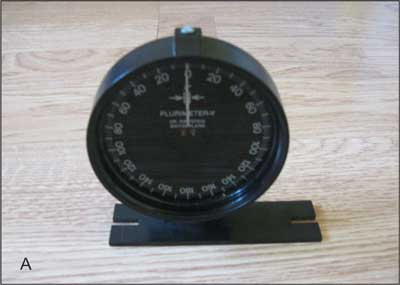
Fig. 1A. Rippstein plurimeter in the “zero” position.
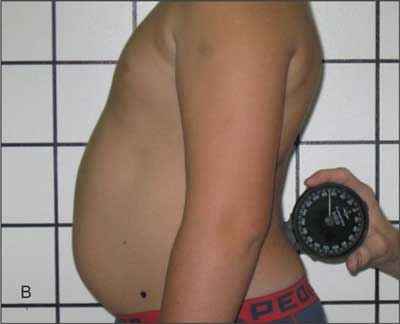
Fig. 1B. Measurement of the lumbosacral angle at L5/S1.
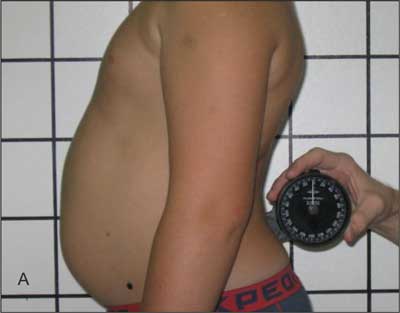
Fig. 2A. Measurement of lumbar lordosis angle – initial position with plurimeter in “zero” position at L5/S1.
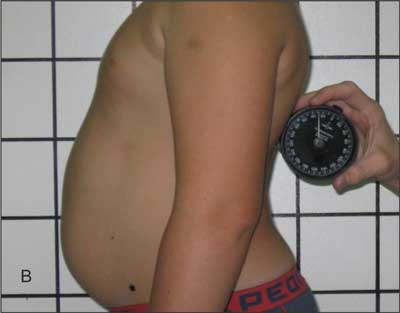
Fig. 2B. Measurement of lumbar lordosis angle – final position with lumbar lordosis angle at Th12/L1.
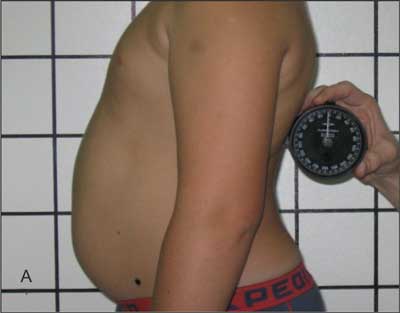
Fig. 3A. Measurement of distal thoracic kyphosis angle – initial position with plurimeter set at “zero” at Th12/L1.
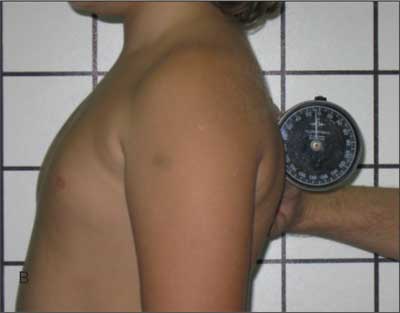
Fig. 3B. Measurement of distal thoracic kyphosis angle – final position at thoracolumbar junction .
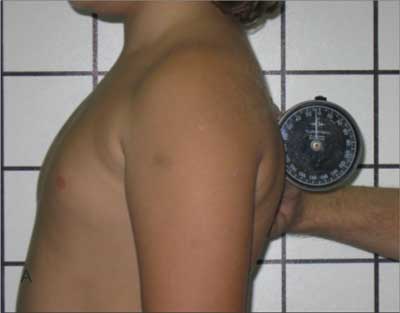
Fig. 4A. Measurement of proximal thoracic kyphosis – initial position with plurimeter set at “zero” at Th6/Th7.
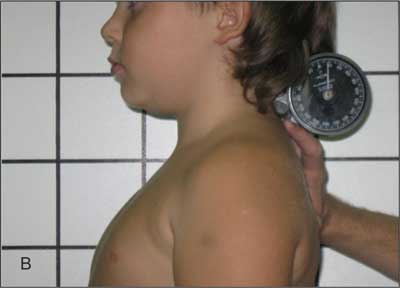
Fig. 4B. Measurement of proximal thoracic kyphosis – final position with the value of proximal thoracic kyphosis at C7/Th1.
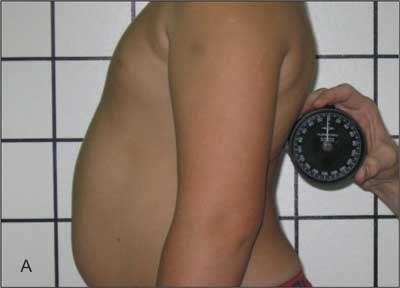
Fig. 5A. Measurement of the total thoracic kyphosis – initial position with plurimeter set at “zero” at Th12/L1.
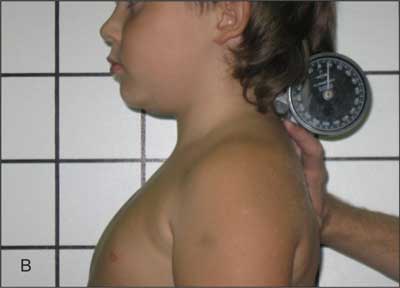
Fig. 5B. Measurement of the total thoracic kyphosis – final position with the value of total thoracic kyphosis at C7/Th1.
Statistical analysis was performed using the GraphPad software, the Kolmogorov-Smirnov test was applied for normal distribution, and paired t test for comparison of the means. The level of significant differences was adopted by p = 0,05.
Powyżej zamieściliśmy fragment artykułu, do którego możesz uzyskać pełny dostęp.
Mam kod dostępu
- Aby uzyskać płatny dostęp do pełnej treści powyższego artykułu albo wszystkich artykułów (w zależności od wybranej opcji), należy wprowadzić kod.
- Wprowadzając kod, akceptują Państwo treść Regulaminu oraz potwierdzają zapoznanie się z nim.
- Aby kupić kod proszę skorzystać z jednej z poniższych opcji.
Opcja #1
24 zł
Wybieram
- dostęp do tego artykułu
- dostęp na 7 dni
uzyskany kod musi być wprowadzony na stronie artykułu, do którego został wykupiony
Opcja #2
59 zł
Wybieram
- dostęp do tego i pozostałych ponad 7000 artykułów
- dostęp na 30 dni
- najpopularniejsza opcja
Opcja #3
119 zł
Wybieram
- dostęp do tego i pozostałych ponad 7000 artykułów
- dostęp na 90 dni
- oszczędzasz 28 zł
Piśmiennictwo
1. Górecki A, Kiwerski J, Kowalski IM et al.: Bad posture prevention in children and youth in education and upbringing – experts recommendations. Pol Ann Med 2009; 16(1): 168-177.
2. Łabaziewicz L: Faulty postures. [In:] Marciniak W, Szulc A, editors. Orthopaedics and Rehabilitation of Wiktor Dega. Vol. 2. Warsaw, PZWL 2008; p. 63-67.
3. Kasperczyk T: Wady postawy ciała. Diagnostyka i leczenie. Kraków, FHU “Kasper” s.c; 2001; p. 9-70.
4. Żuk T, Dziak A, Gusta A: Podstawy Ortopedii i Traumatologii. Podręcznik dla studentów. Warsaw, PZWL 1980; p. 46-70.
5. Weiss HR, Hollaender M, Klein R: ADL based scoliosis rehabilitation – The key to an improvement of time efficiency? Stud Health Technol Inform 2006; 123: 594-598.
6. Gerhardt JJ, Rippstein J: Measuring and Recording of Joint Motion. Toronto, Hogrefe and Huber Publishers 1990.
7. Stoliński Ł, Szczygieł A, Stolińska E, Czaprowski D: Therapy of failure posture after Ackermann associated with directed corrective exercises – own experience. Medycyna Manualna 2009; Vol. XIII(1-4): 24-31.
8. Szczygieł A, Ślusarczyk A: Mobility and shaping of curvature of the spine in children with defective body posture. Pol J Physiother 2003; 3(3): 261-271.
9. Green S, Buchbinder R, Forbes A, Bellamy N: A standardized protocol for measurement of range of movement of the shoulder using the Plurimeter-V inclinometer and assessment of its intrarater and interrater reliability. Arthritis Care Res 1998; 11(1): 43-52.
10. Watson L, Balster SM, Finch C, Dalziel R: Measurement of scapula upward rotation: a reliable clinical procedure. Br J Sports Med 2005; 39: 599-603.
11. Stolinski L, Kotwicki T: Self-correction of posture: assessment of the quality of the movement accomplished by non-instructed school children. Scoliosis 2012; 7(Suppl 1): O66.
12. Kotwicki T: Sagittal and transversal plane deformity in thoracic scoliosis. Stud Health Technol Inform 2002; 91: 251-256.
13. Barczyk K, Skolimowski T, Giemza Cz: Posture correction following verbal stimulus in early primary school children. Polish J Sport Med 2001; 7: 287-289.
14. Kluszczyński M: The prevalence of postural defects and back asymmetry in children from rural areas. Pol J Physiother 2007; 7(1): 71-79.
15. Zwierzchowska A, Gawlik K, Dudek J, Graca J, Palica D: Assessment of posture in 1st year students of the University of Economics in Katowice. Polish J Sport Med 2008; 1: 37-44.
16. Owczarek S, Bondarowicz M: Zabawy i gry ruchowe w gimnastyce korekcyjnej. Warszawa, WSiP 1997; p. 5-25.
17. Canales JZ, Cordás TA, Fiquer JT et al.: Posture and body image in individuals with major depressive disorder: a controlled study. Rev Bras Psiquiatr 2010; 32(4): 375-380.
18. Canhadas Belli JF, Chaves TC, Siriani de Oliveira A, Grossi DB: Analysis of body posture in children with mild to moderate asthma. Eur J Pediatr 2009; 168: 1207-1216.
19. Neiva PD, Kirkwood RN, Godinho R: Orientation and position of head posture, scapula and thoracic spine in mouth-breathing children. Int J Pediatr Otorhinolaryngol 2009; 73: 227-236.
20. Stoliński Ł, Kotwicki T: Wstępne wyniki analizy postawy ciała dzieci biorących udział w projekcie “Poznań stawia na zdrowie – profilaktyka wad postawy. [W:] Kotwicki T et al. editors. Profilaktyka wad postawy i kształtowanie zachowań prozdrowotnych wśród dzieci. Materiały Szkoleniowe. Urząd Miasta Poznania 2011; p. 11-20.










